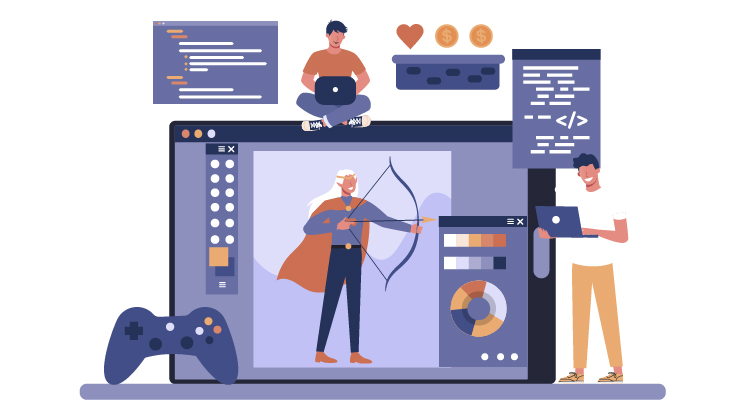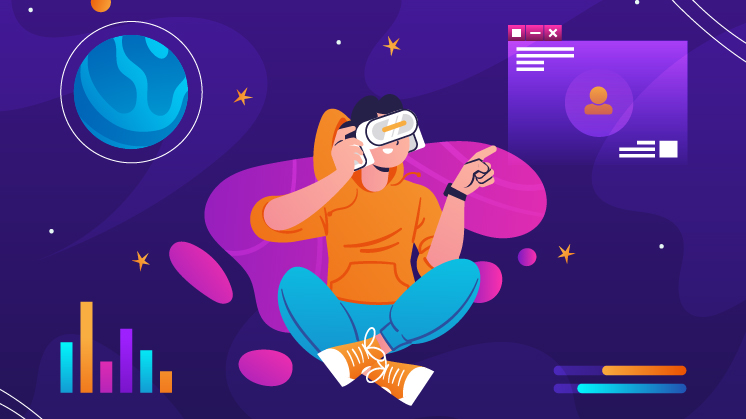Gamification is everywhere these days. From fitness trackers rewarding you with badges for reaching goals to loyalty programs showering you with points for every purchase, the concept of using game elements in non-game contexts has exploded in popularity. But where did it all begin? This blog is all about the history of gamification and how it evolved over the years.

Let’s dive in!
What is The History of Gamification?
Gamification history isn’t just about coining a fancy term. It’s about recognizing the age-old human desire for challenge, reward, and progress and applying it to achieve goals outside the domain of entertainment. Think of it this way:
- The Boy Scouts awarding badges for achievements,
- Frequent flyer programs offering miles for travel, or
- Sticker charts used to motivate kids
All the above are early examples of gamification principles at play.
Key Gamification Terminology
As gamification has evolved, a specific vocabulary has emerged to describe its various components. Here are some key terms to know:
- Points: A basic reward unit often tracks progress toward a larger goal.
- Badges: Digital or physical emblems awarded for completing specific tasks or achieving milestones.
- Leaderboards: Public displays rank players based on performance, fostering competition and motivation.
- Levels: Stages of increasing difficulty, offering a sense of progression and accomplishment as players advance.
- Challenges: Time-bound tasks or activities encouraging players to push their limits and compete.
- Quests: Multi-step tasks with a narrative element, adding a layer of story and purpose to activities.
- Virtual currency: In-game currency can be used to purchase virtual goods or power-ups, further increasing engagement.
Understanding this terminology equips you to recognize gamification elements in various contexts. It helps you appreciate the strategic use of game mechanics to drive desired behaviors.
Who is the Father of Gamification?
While the history of gamification has existed for centuries, the term “gamification” itself is a relatively new invention. Nick Pelling, a British computer programmer, is widely credited as the father of gamification, coining the term in 2002.
Pelling, tasked with developing a game-like interface for ATMs and vending machines, recognized the potential of applying game design principles to non-game contexts.
His invention of the term “gamification” helped solidify this concept and sparked a new wave of exploration into its potential applications.
Who is the Developer of Gamification?
While Pelling gets the credit for naming it, the true development of gamification as a practice involved a collective effort over time. Here are some key milestones and changelog who shaped the gamification landscape:
- 1896: S&H Green Stamps, one of the earliest examples of loyalty programs, launched, rewarding customers with points redeemable for gifts.
- 1908: The Boy Scouts movement uses badges and ranks to motivate and recognize achievements.
- 1973: Charles Coonradt’s book “The Game of Work” explored the concept of applying game design principles to improve employee engagement.
- 1978: The birth of social video games with MUD1 (Multi-User Dungeon), highlighting the power of collaboration and competition in a virtual environment.
- 2002: Nick Pelling coins the term “gamification.”
- 2003-2007: Early gamification platforms like Bunchball and Badgeville emerge, offering businesses tools to implement gamification strategies.
- 2010s: Gamification is popular, and it has applications in various fields, such as education, healthcare, marketing, and fitness.
These are just a few examples, and the history of gamification continues to be written. As technology evolves and our understanding of human motivation deepens, we can expect even more innovative and effective ways to leverage gamification principles for positive change.
When Did The First Modern Gamification Platform Created?
With the development of Bunchball by Rajat Paharia in 2005, gamification started to transform into an organized, contemporary platform. Bunchball is credited with being the first cloud-based gamification platform that allowed corporations and organizations to fully employ gamification’s potential.
Bunchball transformed how businesses viewed employee engagement and motivation by incorporating game mechanics like leaderboards, badges, points, and objectives into the workplace. This platform showed how gamification can transform conventional business operations and set the stage for endless gamification projects that followed.
Because to Bunchball’s creative strategy, businesses were able to integrate aspects of game design to improve user engagement, increase employee performance, and foster consumer loyalty. The platform’s success demonstrated how gamification works in non-gaming environments due to human core drives, encouraging other sectors to investigate related tactics.
The Roots of Gamification
The word “gamification” has its roots in the word “game”. However, the concept goes beyond mere fun and entertainment. Let’s dissect the word “game” to understand core principles behind history of gamification.
The exact origin of “game” is debated. Some trace it back to Old English words like “gamen” (meaning merriment or sport) or “gamenian” (to play, jest). Others suggest a connection to Germanic words with similar meanings.
Regardless of its precise origin, the core concept of a game revolves around the following elements:
- Challenge: Games present obstacles or tasks that require skill, strategy, or effort to overcome.
- Rules: A defined set governs how the game is played, creating a fair and structured environment.
- Goals: Games have clear objectives, whether reaching a finish line, solving a puzzle, or accumulating points.
- Feedback: Players receive feedback on their performance, allowing them to learn, adapt, and progress.
- Reward: Games offer intrinsic (fun, satisfaction) or extrinsic (points, badges) rewards for achieving goals.
When we apply these game elements to non-game contexts, the magic of gamification happens. We can transform mundane tasks into engaging experiences by incorporating these core principles.
Real-World Examples of Gamification
Gamification seeps through industries, proving its effectiveness in motivating and engaging users in diverse contexts. Here’s a glimpse into how different sectors use gamification:
Education
Imagine learning history through interactive simulations or practicing math with points and badges. Educational apps and e-learning platforms like Learn Dash use gamification to make learning fun, improve knowledge retention, and encourage healthy student competition.
Healthcare
History of gamification suggests it isn’t just for physical fitness. Apps can help patients manage chronic conditions by rewarding them for taking medication, tracking healthy habits, and completing educational modules. Gamified therapy programs can make treatment more engaging for children and adults alike.
Marketing
Loyalty programs with points, badges, and tier systems are a classic example of gamification in marketing. Companies also use gamified contests, quizzes, and interactive polls to boost brand awareness, user engagement, and data collection.
Workplace
Gamification can revolutionize employee training and development. Interactive simulations, task completion points, and leaderboards for team challenges can make learning enjoyable and promote healthy competition. Gamified performance management systems can motivate employees and foster a culture of recognition.
Fitness and Wellness
Fitness trackers and apps with step goals, activity badges, and personalized challenges are prime examples of gamification in action. They leverage our natural desire for competition and achievement to make exercise more engaging and track progress effectively.
These are just a few examples and the possibilities are endless, keeping in mind the history of gamification. As virtual reality (VR) and augmented reality (AR) integrate with gamification, we can expect even more immersive and interactive experiences across various fields.
The Future of Gamification
Gamification’s future is bright. As technology evolves and our understanding of human behavior deepens, we can expect advancements in:
- Personalized gamification: Tailoring game mechanics and rewards to individual preferences and motivations.
- AI-powered gamification: Utilizing artificial intelligence to personalize experiences, adapt difficulty levels, and offer targeted feedback.
- Gamification for social good: Using gamification to address social challenges, promote environmental sustainability, and encourage positive behavior change.
The ethical considerations of gamification, such as ensuring inclusivity and avoiding addictive loops, will remain a focus. However, history of gamification can help in revolutionizing how we learn, work, live, and achieve our goals when implemented thoughtfully.
Last Word
We started with the history of gamification and went all the way to the future of this engagement tool. Whether you’re a business owner, educator, or someone looking for ways to make everyday tasks more engaging, understanding gamification’s principles and history can empower you to use its power for positive change. So, next time you see a points system, a progress bar, or a virtual badge, remember – it’s not just a game; it’s gamification in action!


